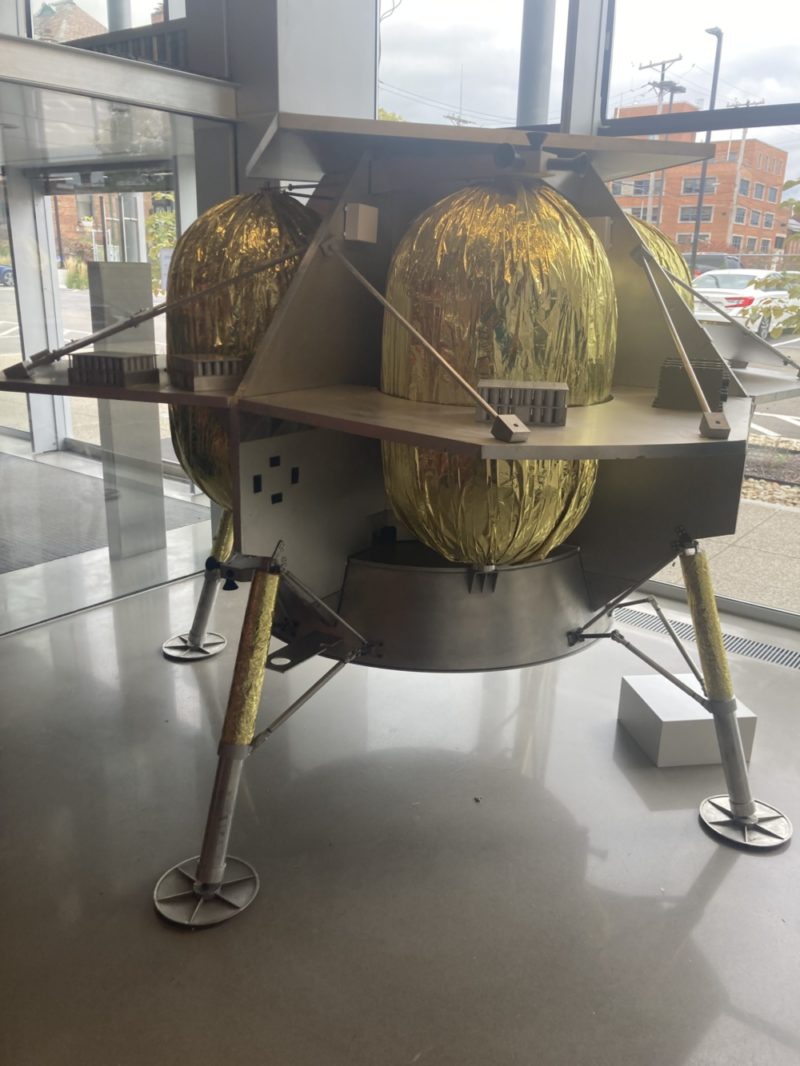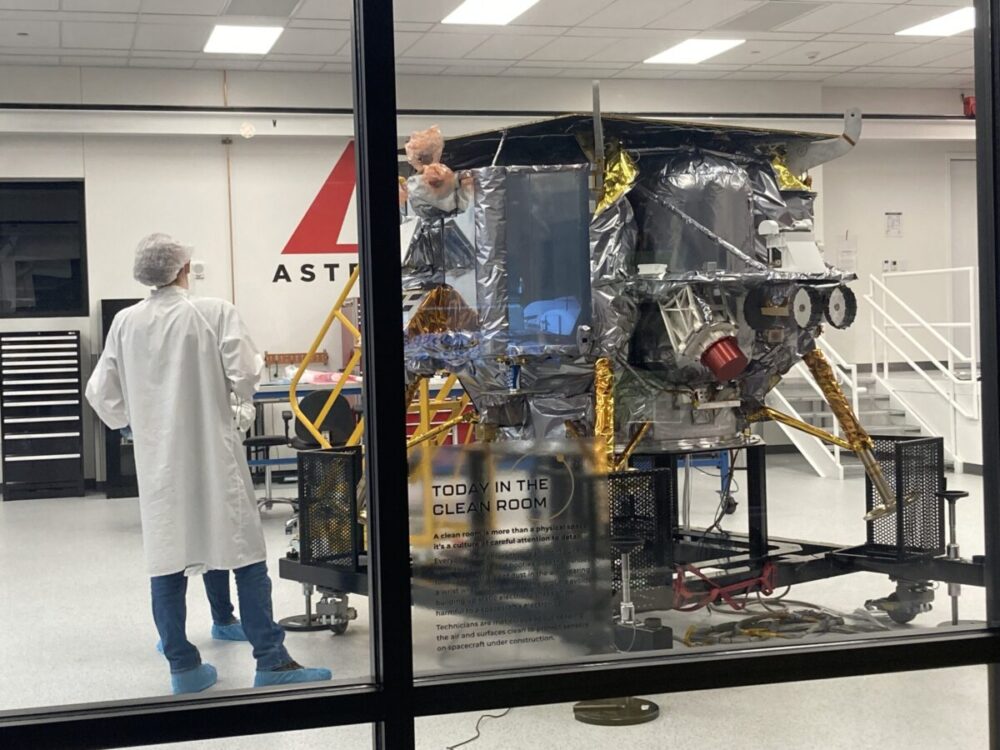With its entire flight acceptance campaign complete, the spacecraft is ready to be sent to Cape Canaveral, Florida where the United Launch Alliance (ULA), the space technology company’s rocket provider, will receive it.
But while the company is waiting for ULA’s green light, the Peregrine currently sits at Astrobotic’s HQ, where the public can see it up close for the last time before the much-anticipated launch.
With its departure pending, Astrobotic invited this reporter to catch a final glimpse and learn more about what 2023 has in store for the company as a whole.
CEO John Thornton told Technical.ly that while a concrete date to launch the Lunar Lander hasn’t been set just yet, the company expects it to take place in Q1. At the moment, Thornton is happy with the progress that’s been made, as the launch will be the end result of years of labor from the company.
“People literally laughed at us, and it took 15 years to convince people that yes, we can do it. And yes, we can do it profitably,” Thornton said. “This is a culmination of a long, long history of pushing for the moon and trying to build a business around it.”

Most recently, the lunar lander was in Florida at ULA’s Vulcan Centaur for thermal vacuum. This was done by subjecting the lunar lander hot and cold temperatures to simulate the conditions it’d be in during the mission. Previous tests included a vibration test, designed to ensure that the structure was sound enough to survive being launched, and a volume test to ensure acoustic frequencies wouldn’t interfere with the lunar lander during the mission.
What all of these tests have in common, Thornton explained, is that they’re designed to see if the spacecraft can survive the moon’s conditions.
“So far, it’s proving to be capable of surviving this base environment, which we’re very excited about,” Thornton said. “We’re very happy and very proud of our spacecraft development team for producing a fantastic spacecraft that has so far flown through our test program.”
Right now, Thornton doesn’t anticipate any major changes being made to the spacecraft prior to the launch. However, that doesn’t mean there’s nothing left for the engineers who’ve worked on the spacecraft to do. In a month or two, the company will begin construction of the Griffin lander, a medium-class lunar lander selected to deliver NASA’s water-hunting VIPER rover to the lunar south pole in 2023. During its construction, it will be on view to the public in Astrobotic’s Moonshot Museum.

“You’ll see the beginnings of the bones of the structure of the Griffin lander being built there, which is so cool that the public can follow along the build,” Thornton said. “That is the largest lander since [the] Apollo. It’s a monster — it barely fits out those garage doors at the front of the building.”
The company will also be releasing different hardware. In particular, Director of Marketing and Communications Alivia Chapla told Technical.ly the company would be releasing what’s called lunar surface systems. That means rovers and vertical solar array technology meant to power NASA’s Artemis lunar exploration missions on the moon. The public can expect to see Astrobotic’s Cube Rover on a lunar mission in the near future, too.
“It will be an exciting next few years for sure,” Chapla said. “There’s just a lot coming up.”
As Astrobotic waits for for the day when the Lunar Lander can be sent off to Florida, in the meantime Thornton said it’s important to remember that this isn’t the beginning of the Steel City’s contribution to America’s relationship with space. Rather, it’s a full circle moment to the work that began decades ago when the city helped the states win the Space Race.
“Pittsburgh is leading America back to the moon, and that’s saying a lot,” Thornton said. “There’s hundreds and hundreds of reasons why we [the company] should have failed along the way. And we almost did. But, we saw the way through, and here we are at the edge of success.”
[Further reading: Pittsburgh helped the US win the Space Race. Now, local tech is going to the moon again]







